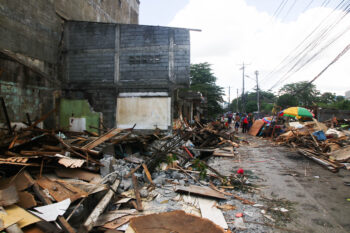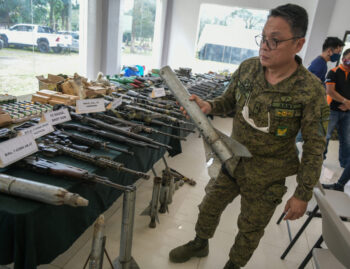By Robert Bagatsing
The Philippines has achieved impressive economic growth numbers in recent years, and has further reinforced its status as one of the major economies of Asia. Now, the country finds itself amidst a power crisis that may portend a pronounced economic slowdown.
In spite of the slow global economic growth, the Philippines remained a strong economic performer in Southeast Asia. A recent World Bank communiqué substantiates this when it reported that the Philippines’ near-term economic growth was likely to remain strong, and was projected to accelerate to 6.4 per cent in 2016, before slightly tempering to 6.2 per cent in 2017.
Despite the positive economic outlook, there is a persistent power shortage being experienced in key industrial and commercial areas in the Philippines threatening to fade the lights on this promising growth story. The power supply shortage is most pronounced during peak summer months, when hydropower is reduced from the seasonal dry spell, and when a random shutdown of a power plant on the grid can initiate a disastrous widespread power outage. Yes, the Philippines is still grappling with rolling power outages similar to what bedeviled the country in the 1990s.
The Philippines has an enormous energy potential to free itself from the shackles of the power supply conundrum, given its notable geothermal energy capacity, if not for a slew of transmission and distribution limitations, inadequacy in domestic energy production and a challenging geography. Other aggravating factors include the country’s observed dependence on imported fuel, non-subsidy of fuel on the part of the government, high electricity tariffs, and ageing existing power infrastructure.
While the Philippines has managed to continually achieve impressive economic growth rates in the face of its power supply challenges, the need for a resolution is growing ever more urgent. The country’s economic expansion, among other factors, has prompted a spike in its requirement for electricity, and now the Philippines’ electric power systems are struggling to keep up. The onus is now on its leadership and on key power industry stakeholders to prevent a power crisis that can negate the economic successes that the country has achieved in recent years.
A turning point
Industry and economic experts opine that the power supply shortage in the Philippines is part of a decades-old chronic insufficiency in the country’s power sector. They point to the country’s mothballing of its sole nuclear plant in 1986 as a vital reason why the Philippines is still struggling to satiate its national electricity demand. Because no new capacity was introduced to the country’s power network, what ensued were sustained day-long power outages that fended off foreign investment, suppressed the growth of various heavy industries and stalled the country’s economy. The incoming government of President Ramos (1992-1998) resolved the power challenge through emergency powers granted by the 1991 Energy Crisis Act to conclude contracts for new power generation. The country was, then, afforded some breathing room.
Now, 18 years on, the Philippines has come full circle and is again confronting a potentially debilitating power crisis.
What is being done?
One of the country’s foremost, albeit stop-gap, response to the power supply shortage is the “Interruptible Load Program”, which entails large establishments, such as shopping malls, office buildings and factories, to voluntarily switch their power source from the main grid to their proprietary generators when a shortage is impending. It is a program established by the Department of Energy and the Energy Regulatory Commission to help ease the energy supply deficiency in the country until new capacities are introduced to the grid. As of press time, even as details of compensation are yet to be finalized, a number of large firms have already pledged their participation.
There has also been an interest on the part of the government to review, revise and reinforce the Electric Power Industry Reform Act (EPIRA) of 2001, which mandated the privatization of state-owned power enterprises in the hope of encouraging the availability of affordable electricity and fair market competition. The government intends to amend the EPIRA to allow it to intervene in the power sector as need be. For instance, the government proposes to have its own power generation facilities so that it is able to instantly fill in the power shortfalls. Nevertheless, the project still remains to be cost-prohibitive.
The country’s energy department estimates that, with the current economic trajectory, the Philippines’ power demand will balloon to approximately 29,500 MW in 2030. The country’s power generation capacity in the same year, however, is only predicted to be at 26,500 MW – 3,500 MW short of the requirement. Here’s the caveat: In order to bridge the power supply gap, the Philippines reportedly needs USD 46 billion to set up modern power generation facilities in the country. The government is thus taking a proactive stance to woo power investors to invest in the country and help increase its generation capacity.
Not helping this effort, however, is the country’s observed excessive bureaucracy and adherence to official rules and formalities. The energy department itself estimates that it takes approximately 165 signatures and a minimum of three years only to secure the necessary permits for a permanent power plant project. Further delays may ensue in case of an eventual judicial dispute. Other processes like finalizing financial concerns, signing off project designs, sourcing equipment and materials, securing allied service providers, let alone constructing the permanent power plant also take a considerable amount of time. Thus, many foreign power companies have expressed dismay over the situation, saying that the requirements have been a deterrent to enter a market demanding a sizeable initial outlay and a commitment of at least 20 years.
There is no better time
There is no better time for the Philippines to resolve its power challenges than now. The country cannot afford to invalidate its economic achievements of recent years by risking going through a similar power crisis that reined in its economic and industrial growth. If the country wishes to go on living its Cinderella story, the Philippines should do what it can to erase serious concerns about its economic and social sustainability.
While permanent power solutions require a substantial capital outlay, temporary power technologies do not involve capital expenditure. In fact, the government, power utility providers and other interested industry holders can pay for the rented electricity from their operating incomes. Temporary power solutions may represent a short-term restorative measure, but when employed in crucial times like this, they can be the difference between a calamitous economic collapse and a momentous economic feat.
While the government is revisiting the EPIRA, and while concerned agencies are working to streamline their regulatory processes, the Philippines can readily benefit from the temporary power solutions, which can be swiftly delivered to the Philippines and installed and powered on in as little as days. Contrary to permanent power plants that require long lead times to be completed, rental power plants can immediately supply electricity as soon as the equipment arrive at site owing to its inherent ease of installation and grid connection.
Though recent governments have made great strides in the resolution of the power crisis, there are more to be done to ensure that the Philippines’ power-generation facilities are adequate to cope with the country’s increasing demand for electricity. Until the government and the relevant industry stakeholders encounter an appropriate solution to the persistent power supply challenges, the Filipino will continue to struggle with what has notoriously become a staple of life in the Philippines.
(MindaViews is the opinion section of MindaNews. Robert Bagatsing is the founder of Lincoln Martin Strategic Marketing and GineersNow, a social enterprise based in Dubai. A graduate of San Beda with further study at Harvard Business School, he currently heads the marketing at Altaaqa Global – Caterpillar, and a consultant to Zahid Group.)







